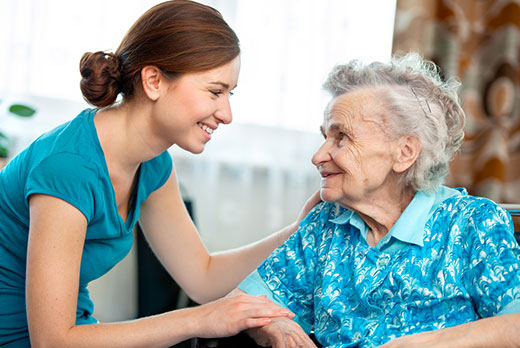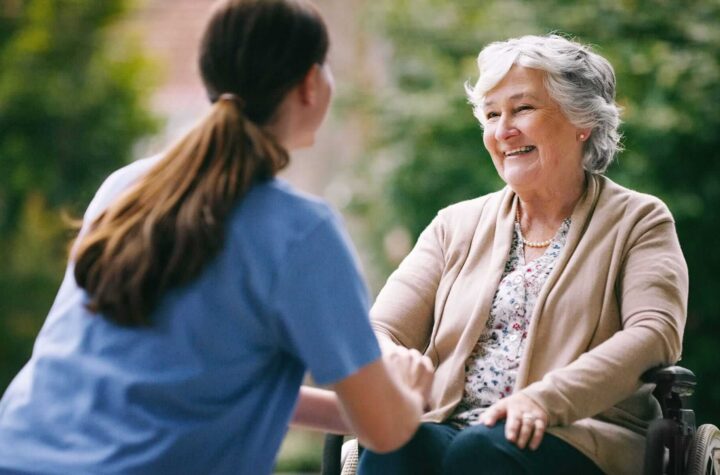
care home
In today’s society, care homes serve as vital sanctuaries for individuals in need of specialized care and support, providing a safe haven where residents can live with dignity and receive assistance tailored to their unique needs. The importance of ensuring both security and accessibility within these environments cannot be overstated, as they directly impact the well-being and quality of life of residents. This comprehensive exploration delves into the multifaceted approaches to maintaining safety and accessibility in care homes, addressing key considerations ranging from physical security measures to inclusive design principles, with an emphasis on enhancing residents’ overall quality of life and fostering a sense of belonging.
Ensuring Physical Security
Physical security measures play a vital role in maintaining the safety and well-being of residents and staff within care home environments, exemplified by the standards upheld at fairviewcourt.co.uk. These measures are designed to create a secure living environment that fosters a sense of safety and comfort for all occupants. Implementing robust access control systems, such as keycard entry or biometric scanners, serves as a critical first line of defense against unauthorized access. By regulating entry to sensitive areas, care homes can minimize the risk of intrusions and ensure that only authorized individuals have access to designated spaces. This not only protects residents and staff but also safeguards confidential information and valuable assets within the facility.
Strategically placing surveillance cameras throughout the premises provides continuous monitoring and surveillance, serving as both a deterrent to potential security threats and a valuable tool for staff and administrators. By capturing real-time footage of activities within the facility, surveillance cameras enable staff to identify and respond to security incidents promptly, helping to maintain a safe and secure environment for residents and staff alike. Adequate lighting in outdoor areas is essential for enhancing security by minimizing blind spots and deterring illicit activities such as vandalism or trespassing.
Well-lit pathways, parking areas, and outdoor recreational spaces contribute to a sense of safety and visibility, reducing the likelihood of criminal activity and enhancing overall security measures. In addition to access control and surveillance, alarm systems provide an additional layer of protection by alerting staff to potential security breaches or emergencies. Whether triggered by unauthorized entry attempts, fire, or medical emergencies, alarm systems ensure a rapid and coordinated response, minimizing the impact of unforeseen incidents and prioritizing the safety and well-being of residents and staff.
By prioritizing these physical security measures, care homes can instill confidence and peace of mind among residents and staff, fostering a safe and secure living environment conducive to their well-being and comfort. These measures not only protect against external threats but also create a sense of community and belonging within the care home, where residents can thrive in an environment that prioritizes their safety and security above all else.
Emergency Preparedness and Response
Establishing clear protocols for emergency preparedness and response is paramount in mitigating risks and ensuring the safety of residents and staff alike within care home environments. Regular drills and training sessions should be conducted to familiarize staff with emergency procedures, including evacuation protocols and first aid training. These drills help ensure that staff members are well-prepared to respond effectively in high-stress situations, enabling them to prioritize the safety and well-being of residents.
Collaborating with local emergency services and maintaining open communication channels with relevant authorities are essential components of effective emergency preparedness. By establishing strong partnerships with local fire departments, paramedics, and law enforcement agencies, care homes can access additional resources and support during emergencies. This collaboration enables care homes to respond swiftly and effectively to unforeseen incidents, minimizing potential harm and ensuring residents’ well-being.
Investing in advanced technology and communication systems further enhances the efficiency of emergency response efforts. By implementing state-of-the-art alarm systems, emergency notification systems, and two-way communication devices, care homes can facilitate rapid communication and coordination during emergencies. These technological advancements provide staff with the tools and resources needed to respond effectively to evolving situations, ensuring a swift and coordinated response to protect residents and staff.
Furthermore, leveraging technology can enhance the overall security infrastructure of care homes, augmenting existing physical security measures with advanced surveillance and monitoring capabilities. By deploying surveillance cameras, motion sensors, and access control systems, care homes can strengthen perimeter security and deter potential security threats. Additionally, integrating these systems with centralized monitoring platforms allows staff to monitor the facility in real-time, enabling proactive intervention in the event of security breaches or emergencies. If you are looking for bracelet. There’s something to suit every look, from body-hugging to structured, from cuffs to chain chain bracelet and cuffs.
Promoting Accessibility and Inclusivity
In addition to ensuring physical security, promoting accessibility and inclusivity is crucial in creating environments that accommodate the diverse needs of residents with varying abilities and mobility levels. Universal design principles should be embraced in the architectural layout and interior design of care homes, incorporating features such as wheelchair ramps, wide doorways, handrails, and non-slip flooring to facilitate ease of movement and enhance overall accessibility. By prioritizing inclusive design, care homes can create environments that promote independence and dignity for all residents, regardless of their physical capabilities or limitations.
Furthermore, investing in assistive technologies and adaptive equipment plays a pivotal role in enhancing accessibility and promoting independence among residents with disabilities or age-related impairments. This may include installing stairlifts or elevators to facilitate movement between floors, providing adjustable beds and seating options for personalized comfort, and integrating smart home technology to assist with daily tasks and communication needs. By leveraging innovative solutions and assistive devices, care homes can empower residents to live with greater autonomy and dignity while ensuring their safety and well-being.
Cultivating a Culture of Inclusion and Respect
Beyond physical infrastructure and technological advancements, cultivating a culture of inclusion and respect is essential in fostering a supportive and welcoming environment within care homes. Staff members should undergo training programs and cultural competency workshops to promote diversity and cultural sensitivity, ensuring that residents from diverse backgrounds feel valued and respected. Encouraging social engagement and meaningful activities tailored to residents’ interests and preferences further promotes a sense of belonging and purpose within the care home community. By organizing recreational activities, cultural events, and outings that cater to the diverse interests and abilities of residents, care homes can foster social connections and reduce feelings of isolation and loneliness.
Furthermore, fostering collaborative partnerships with local community organizations, religious institutions, and volunteer groups enhances the sense of community and expands access to resources and support networks for residents and their families. By embracing diversity, promoting social inclusion, and nurturing a culture of empathy and compassion, care homes can create environments where residents feel safe, supported, and valued as integral members of the community.
Conclusion
Ensuring security and accessibility in care homes is essential for creating environments that prioritize the safety, well-being, and dignity of residents. By implementing robust physical security measures, promoting inclusive design principles, and fostering a culture of inclusion and respect, care homes can create safe havens where residents feel empowered to live with independence, autonomy, and dignity. Through collaborative efforts and innovative approaches, care homes can continue to evolve as vibrant and supportive communities that enrich the lives of residents and enhance their quality of life. By prioritizing the safety and well-being of residents, care homes can truly embody the concept of a safe haven, where individuals can thrive and flourish in their later years.



More Stories
8 Reasons Why Moving Into A Care Home Can Be A Positive Thing
What To Expect From A Nursing Care Home
The Quest for the Best Hash Online in Canada: Tips and Tricks